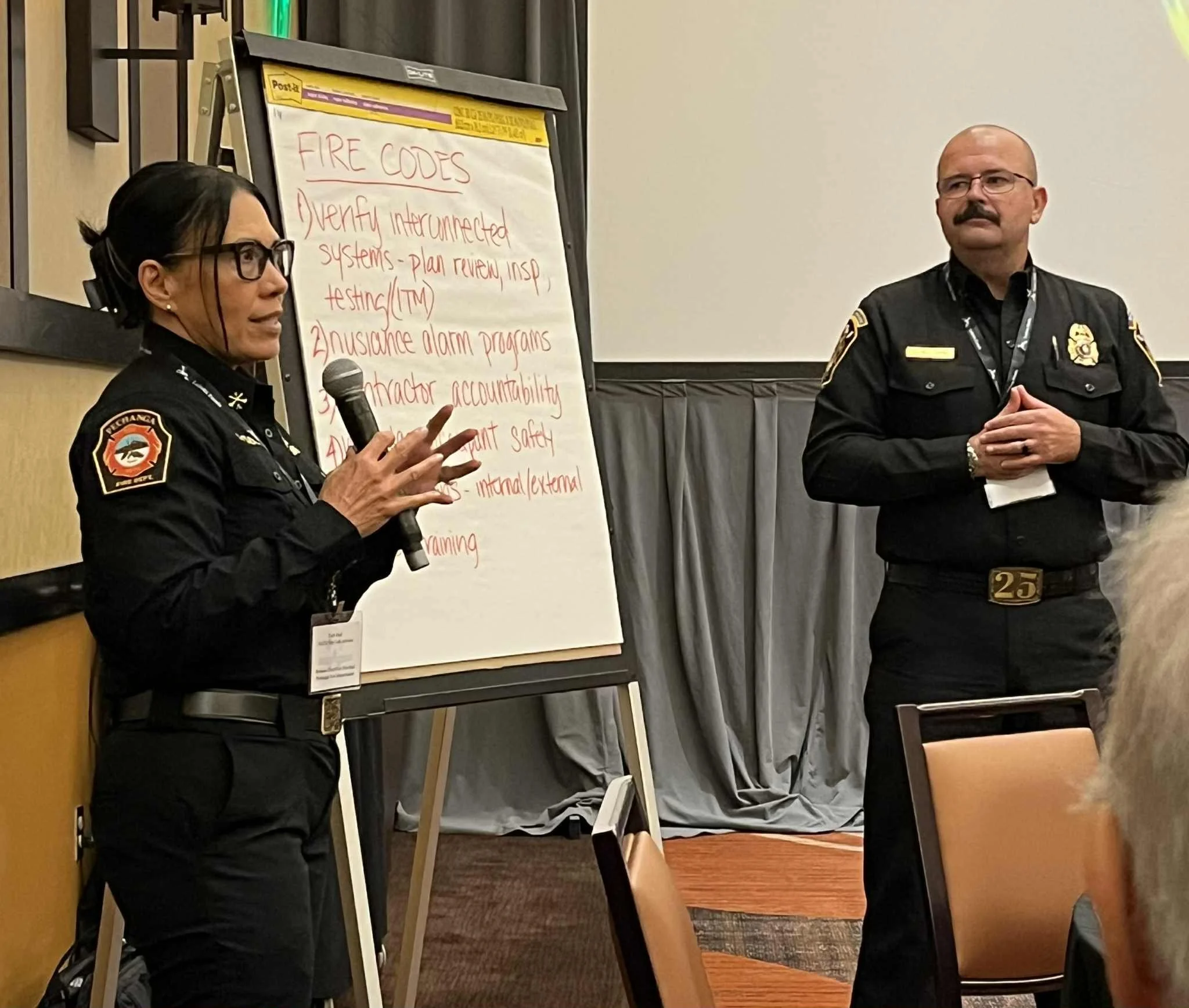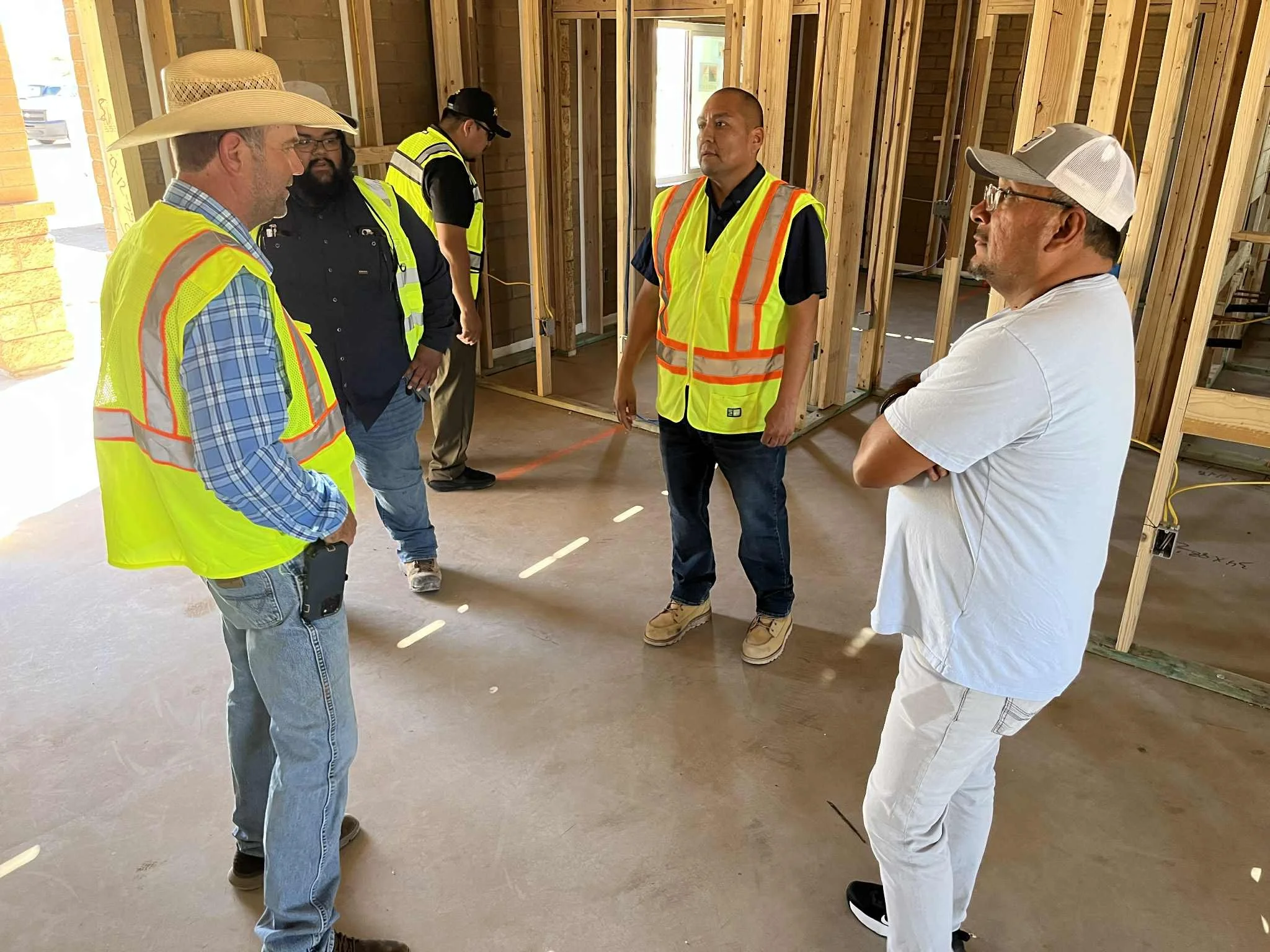Summit of the Native American Code Officials Sheds Light on the Power of Building Codes to Protect Health and Safety in Native Communities
Building codes are more than just regulatory checklists—they are the silent safeguards that ensure not only the structural integrity of our homes and public spaces, but also the safety, health, and wellbeing of every person who steps inside them. With 30 tribal nations represented, the Promoting Tribal Sovereignty through Tribal Building Codes Summit provided groundbreaking insights on the importance of using building codes to protect the safety and property investments of Native Americans.
The second annual summit, sponsored by the Native American Code Officials (NACO) Chapter of the International Code Council (ICC), highlighted the experiences and perspectives of tribal government representatives who are using or enforcing d building codes to benefit their communities.
Nearly 100 participants heard from certified building inspectors, fire service officials, permit technicians and tribal leaders on the use of building codes during the three-day event held outside Phoenix, Arizona. .
NACO was formally voted as the first Sovereign Chapter of ICC, and its development has been a major priority for Lakota Funds. Lakota Funds Executive Director Tawney Brunsch is also a member of the NACO Board of Directors. She sees NACO’s value as a leading voice in improving Native housing and community development by becoming a resource for information and guidance.
“Now is the right time to move this forward,” she said. “We are creating a pathway to sustainable development and safe homes where every Native community is empowered to build on its own terms. We see ourselves as bridge builders to stronger, safer communities.”
Summit presenters pointed to housing projects where contractors cut corners by installing inferior drywall, plumbing, electrical and other building products and by installing materials incorrectly. Not only do poorly built homes lead to costly repairs, but also to poor health environments, abnormally high energy costs and injuries or death from fire, carbon monoxide and electrical shocks. Damen Snow, fire marshal of the Yocha Dehe Fire Department in California, pointed to research which shows that children raised in sub-standard, unsafe housing can develop post-traumatic stress syndrome.
NACO Board Member Matthew Beaudet, former Chicago Building Commissioner, led a panel to discuss setting up a system of building code enforcement that fit Native traditions and priorities. Participants included:
Rainer Shooter, Executive Director, Stockbridge-Munsee Band of Mohicans
Troy Parr, Economic Development Director, Oneida Nation of Wisconsin
Anthony Foerster, Building Official, Pokagon Band of Potawatomi
Daniel Burr, Project Manager, Stockbridge-Munsee Band of Mohican, and NACO Vice President
Beaudet said that without enacting building codes, tribal governments have little control over construction. He said one of the major differences between tribal communities and non-tribal communities in the United States is that Native populations “are not in nation building, they are in nation rebuilding” after their lands were taken and populations decimated and split up to corners of North America where they were forced to live and start over.
Anthony Foerster said his tribe has four counties in Michigan and eight in Indiana where developing a tribal building code faced a range of challenges. He said he is the second code official for the tribe and pointed to significant successes in enforcing codes and fostering positive economic growth. Many consider the tribe’s building safety codes to be superior to the codes adopted by non-tribal governments in the two states.
“We’ve amended our codes our way because our codes protect our families and we don’t want anybody in our families to get hurt,” Foerster said.
To those who allege that building to codes increases housing costs, Foerster and other Summit speakers pushed back strongly.
“If you say you build to code, what it really means is you are building to the bare minimum that is acceptable to protect our interests,” Foerster said.
Foerster said building codes have had a positive impact on his community. People are not spending money for repairs created by neglectful construction and high insurance rates. He said a clinic physician told him incidents of allergies have dropped significantly and community pride is supportive of new parks, playgrounds, walking trails and dog parks.
Rainer Shooter and Daniel Burr have been working on establishing a building code enforcement office for their tribe in eastern Wisconsin. Shooter said codes are essential to quality control of new housing. Without codes, he said contractors will find ways to cut costs or pay little attention to the workers installing materials. The result, even in new structures that look nice from the outside, are costly disasters like upside down windows, leaky plumbing fixtures that generate mold, cracks in frames, foundations, and walls, and spotty insulation.
Burr, who started his work last winter in Wisconsin, said that he’ll run into builders who don’t expect to have their work inspected or flagged for defects. It’s a learning process for them.
In their presentations, Damen Snow and Tim Scott, Chief Building Official for the Yocha Dehe Wintun Nation in California, discussed conditions before and after building codes were adopted. Without a tribal code for all of the reservation, it was chaotic to keep track of which codes had been used or ignored. Reliance on third-party inspections led to confusing record keeping, nonuniform plan reviews and inspections, loose life safety standards and construction delays and frustration. They said tribal building codes can be amended to take cultures and customs into account and to reflect unique energy resources, water supplies and access, and care for cultural sites.
They recommended tribes begin with proven models of successful code enforcement and building a library of peer tribal ordinances, experiences and concerns. They encouraged tribes to “engage the ecosystem” of supportive groups like ICC, NACO, National Fire Protection Association, the Federal Emergency Management Agency and other tribal governments that have enforced building codes.
Also featured at the Summit were new tribal building inspectors:
Jose Munoz, inspector, Gila River Indian Community, Arizona
Israel Hernandez, inspector, Cheyenne River Housing Authority, South Dakota
Dwight Luxon, founder, Luxon Construction Services, South Dakota
Interviewed by NACO Board President David Jackson, the three described the training they received to become ICC certified inspectors and their first years on the job serving their jurisdictions.
On the third day of the Summit, attendees toured the main office for the Gila River Housing Development and its director Fernando Luna, and took a tour of residential and commercial housing projects on the reservation.
“This Summit brought so much energy to the conversation around using building codes that reflect the values of Native nations by protecting the safety and wellbeing of our community members,” said Ellen White Thunder, Deputy Director of Lakota Funds and an experienced construction professional. “Protecting our infrastructure today through building codes means those investments will last for generations to come.”


